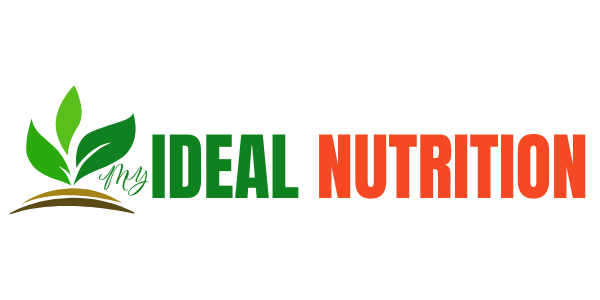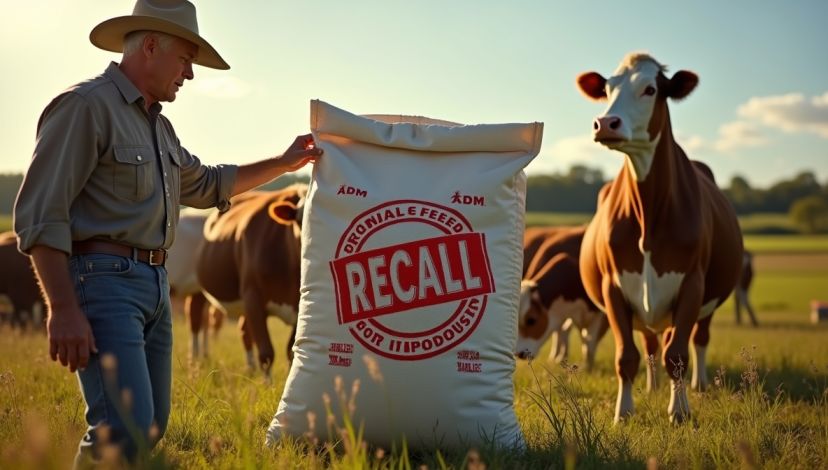ADM Animal Nutrition recalled a large number of the lots of pelleted cattle feed products in the beginning of 2025. High concentrations of copper and low amounts of zinc in certain feed batches motivated the recall because these elements likely harm the health of cattle. ADM, a well-respected animal nutrition company, found the problems by conducting regular quality analysis and launched the recall immediately to save livestock and ensure the product safety. Contaminated feed circulated through several states between January and February 2025, spreading to Illinois, Missouri, Tennessee, Iowa, Georgia, and Ohio. In this blog post, the authors will discuss the details of the recall, its impact on cattle health, and the actions farmers should take in response.
Key Points:
- ADM moved to recall 33 lots of pelleted cattle feed because of the imbalanced minerals in them.
- High copper and low zinc contents might have negative impacts on the health of cattle.
- The agriculturalists are encouraged to halt the utilization of the infected feed in six states.
What Caused The ADM Animal Nutrition Feed Recall?
ADM initiated the recall after discovering abnormal nutrient levels in certain lots of its pelleted cattle feed. Most of the recalled products contained elevated levels of copper, while one product, GROFAST32, had lower-than-reported levels of zinc. These mineral imbalances can become toxic to cattle when consumed over an extended period. The clinical manifestations of copper toxicity may include anorexia, abdominal pain, and lethargy, diarrhea, and dehydration. Zinc deficit, on the other hand, can result in probable reduced feed intake, poor growth, and reduced feed efficiency. ADM discovered these problems when carrying out standard production quality tests in February 2025 and started promptly to inform customers and distributors to withdraw the concerned products into the market. This initiative demonstrates the concern of the firm about the health of animals and the safety of products.
What are the effects of high levels of copper on cattle?
Copper is a critical trace mineral in cattle which is linked to crucial roles of enzyme, immunity and general growth. Nevertheless, surplus copper consumption may impose chronic toxicity, a risky syndrome in bovines. Signs of copper intoxication are diarrhea, abdominal pains, and vomiting due to gastroenteritis, which is typified by an anorexia, (lack of appetite) as well as a dehydration. They also lead to such aspects as depression and lethargy in impacted cows. Copper toxicity may lead to liver failures and death in serious cases. The risk has been especially high when cows are fed on food that contains high levels of copper beyond the recommended level over a long period. The recall is in an attempt to avoid these health complications by withdrawing feeds that contain high concentrations of copper.
| Symptom of Copper Toxicity | Description | Impact on Cattle |
| Anorexia | Loss of appetite | Reduced feed intake and growth |
| Abdominal Pain | Discomfort in the stomach area | Stress and distress |
| Diarrhea | Frequent loose stools | Dehydration and nutrient loss |
| Lethargy | Low energy and weakness | Poor performance and growth |
What Is The Impact Of Zinc Lack In Cattle?
The other mineral that aids the health of the cattle is zinc, which aids the immune system, skin, and growth. Cattle who are fed insufficient amounts of zinc in the feed are likely to lack zinc, and this could impact their well-being and productivity negatively. The most common symptoms of zinc deficiency are poor feed consumption, impaired feed efficiency, retarded growth as well as enhanced vulnerability to infections as a result of compromised immune system. Zinc insufficiency may likewise lead to skin and hooves issues, and this affects the cattle’s health further. The aspects that prompted the inclusion of GROFAST32 in the recalled product were that it had an underrated amounts of zinc, which were likely to cause such ill effects.
| Zinc Deficiency Symptoms | Impact on Cattle Health | Long-Term Consequences |
| Reduced Feed Intake | Less consumption of feed | Poor growth and weight gain |
| Poor Feed Efficiency | Inefficient nutrient utilization | Increased feed costs |
| Immune Weakness | Higher infection risk | More illness and treatment |
| Skin and Hoof Issues | Lesions and hoof deformities | Reduced mobility and welfare |
What Can Farmers do when they have the Recalled Feed?
Any farms that bought any of the 33 recalled batches of 33 of ADM pelleted cattle feed between January 16 and February 27, 2025, should finish immediately using the feed. ADM sold the affected products in Illinois, Missouri, Tennessee, Iowa, Georgia, and Ohio. ADM is encouraging its customers to take this back to their distributor or ADM Animal Nutrition and receive a full refund or replacement. Ideally, farmers must act quickly to prevent harm to their cattle. They should carefully monitor their animals for signs of copper toxicity or zinc deficiency and consult a veterinarian if any symptoms appear. Farmers should also keep detailed records of purchased feed and lot numbers to verify whether the feed is part of a recall.
Note: Locate and check the lot number at the bottom of the feed label to confirm the product is safe before feeding it to your cattle.
Alert: Never feed recalled products to cattle. Always confirm the recall status before requesting a replacement or refund.
How has ADM reacted to the recall and the measures on safety?
ADM Animal Nutrition has a track record of delivering nutritious and safe products of animal feed products. When ADM found out the problem related to mineral imbalance during the regular quality controls, they started their investigation promptly and had aligned with the FDA to precipitate the recall. The company has been undertaking active customer and distributor notification to withdraw the affected products off retail shelves. ADM has already rectified the manufacturing fault that had resulted in the disparities between the mineral levels, and they are striving hard to ensure that such errors never occur again in the future. They have transparency and act promptly, which shows their concern to the health and safety of animals. Moreover, ADM is still offering a refund system and helpline to the affected customers.
| ADM Recall Response Steps | Description | Outcome |
| Routine Quality Check | Detection of mineral imbalances | Informing customers and distributors of the recall |
| Customer Notification | Fixing the production process to ensure proper nutrient levels | Prompt removal of products |
| Product Removal | Removing the affected feed from the shelves | Preventing further use |
| Manufacturing Correction | Fixing production process to ensure proper nutrient levels | Improved product safety |
| Customer Support | Offering refunds and replacements | Customer reassurance |
Conclusion
The ADM animal nutrition feed recall underscores the importance of rigorous quality control in animal feed production. High levels of copper and low levels of zinc in the cattle feeding can be critical to the health of the cattle this includes the growth and the immune system of cattle, and the general health of the animal. ADM immediately recalled 33 lots of pelleted feed used in six states, showing their commitment to animal safety and the integrity of their products. The farmers need to cease utilizing the recalled food products immediately and observe their cattle’s signs and symptoms, and exchange the contaminated products for replacements or receive their money back. The case should also act as a lesson to all livestock farmers to be cautious of feed recalls and manage their feeding routines well to safeguard their farms and rely on it to earn a living.
FAQ’s
Has ADM done anything to deter future feed problems?
Yes, ADM has rectified the production process and has also been collaborating with the FDA in the provision of the safety of products in the future.
What is the reason behind the ADM animal nutrition feed recall?
Officials recalled it because certain batches of pelletized cattle food contained high levels of copper and insufficient zinc, posing a risk to the health of cows.
How does a high level of copper in food impact cattle?
Copper toxicity due to high levels may induce diseases such as anorexia, abdominal pain, diarrhea, lethargy, and dehydration on cattle.
What are zinc deficiency signs in cattle?
Reduced feed intake, poor growth, weakened immune system, and skin or hoof issues are some signs.
What do farmers with the recalled ADM feed have to do?
Distributors or ADM advise them to stop using the feed and report back to recover their money or get a substitute.













